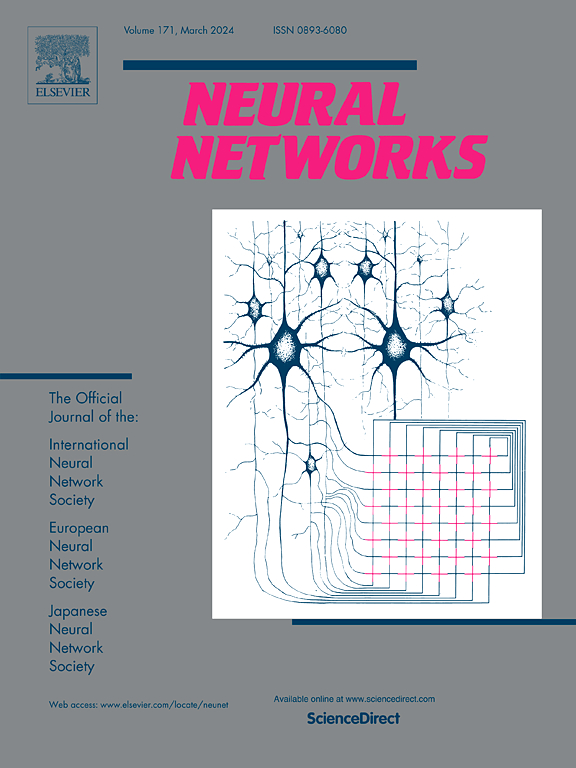图神经网络在身份效应学习中的泛化极限。
IF 6
1区 计算机科学
Q1 COMPUTER SCIENCE, ARTIFICIAL INTELLIGENCE
引用次数: 0
摘要
图神经网络(GNN)已成为在各种图领域进行数据驱动学习的强大工具。它们通常基于消息传递机制,因其直观的表述方式而越来越受欢迎,这种表述方式与 Weisfeiler-Lehman (WL) 的图同构性测试密切相关,而后者已被证明在表达能力方面与之相当。在这项工作中,我们在学习所谓的同一性效应(即确定一个对象是否由两个相同成分组成)的背景下,建立了 GNN 的新概括特性和基本限制。我们的研究是出于了解 GNN 在执行简单认知任务时的能力的需要,它在计算语言学和化学中有着潜在的应用。我们分析了两个案例研究:(i) 双字母单词,结果表明通过随机梯度下降训练的 GNN 在使用正交编码(如单热表示)时无法泛化到未见过的字母;(ii) 双环图,即由两个循环组成的图,我们利用 GNN 和 WL 测试之间的联系,提出了积极的存在性结果。我们的理论分析得到了大量数值研究的支持。本文章由计算机程序翻译,如有差异,请以英文原文为准。
Generalization limits of Graph Neural Networks in identity effects learning
Graph Neural Networks (GNNs) have emerged as a powerful tool for data-driven learning on various graph domains. They are usually based on a message-passing mechanism and have gained increasing popularity for their intuitive formulation, which is closely linked to the Weisfeiler–Lehman (WL) test for graph isomorphism to which they have been proven equivalent in terms of expressive power. In this work, we establish new generalization properties and fundamental limits of GNNs in the context of learning so-called identity effects, i.e., the task of determining whether an object is composed of two identical components or not. Our study is motivated by the need to understand the capabilities of GNNs when performing simple cognitive tasks, with potential applications in computational linguistics and chemistry. We analyze two case studies: (i) two-letters words, for which we show that GNNs trained via stochastic gradient descent are unable to generalize to unseen letters when utilizing orthogonal encodings like one-hot representations; (ii) dicyclic graphs, i.e., graphs composed of two cycles, for which we present positive existence results leveraging the connection between GNNs and the WL test. Our theoretical analysis is supported by an extensive numerical study.
求助全文
通过发布文献求助,成功后即可免费获取论文全文。
去求助
来源期刊

Neural Networks
工程技术-计算机:人工智能
CiteScore
13.90
自引率
7.70%
发文量
425
审稿时长
67 days
期刊介绍:
Neural Networks is a platform that aims to foster an international community of scholars and practitioners interested in neural networks, deep learning, and other approaches to artificial intelligence and machine learning. Our journal invites submissions covering various aspects of neural networks research, from computational neuroscience and cognitive modeling to mathematical analyses and engineering applications. By providing a forum for interdisciplinary discussions between biology and technology, we aim to encourage the development of biologically-inspired artificial intelligence.
 求助内容:
求助内容: 应助结果提醒方式:
应助结果提醒方式:


